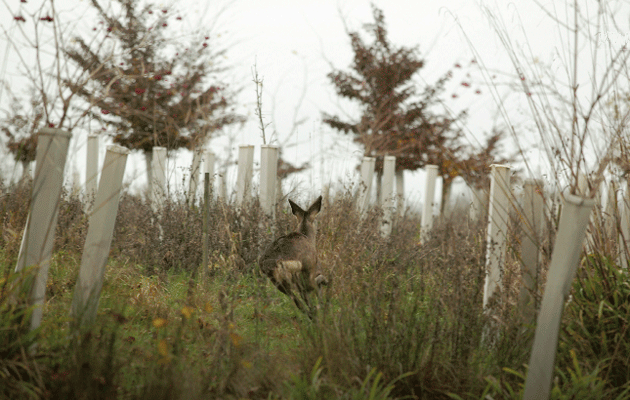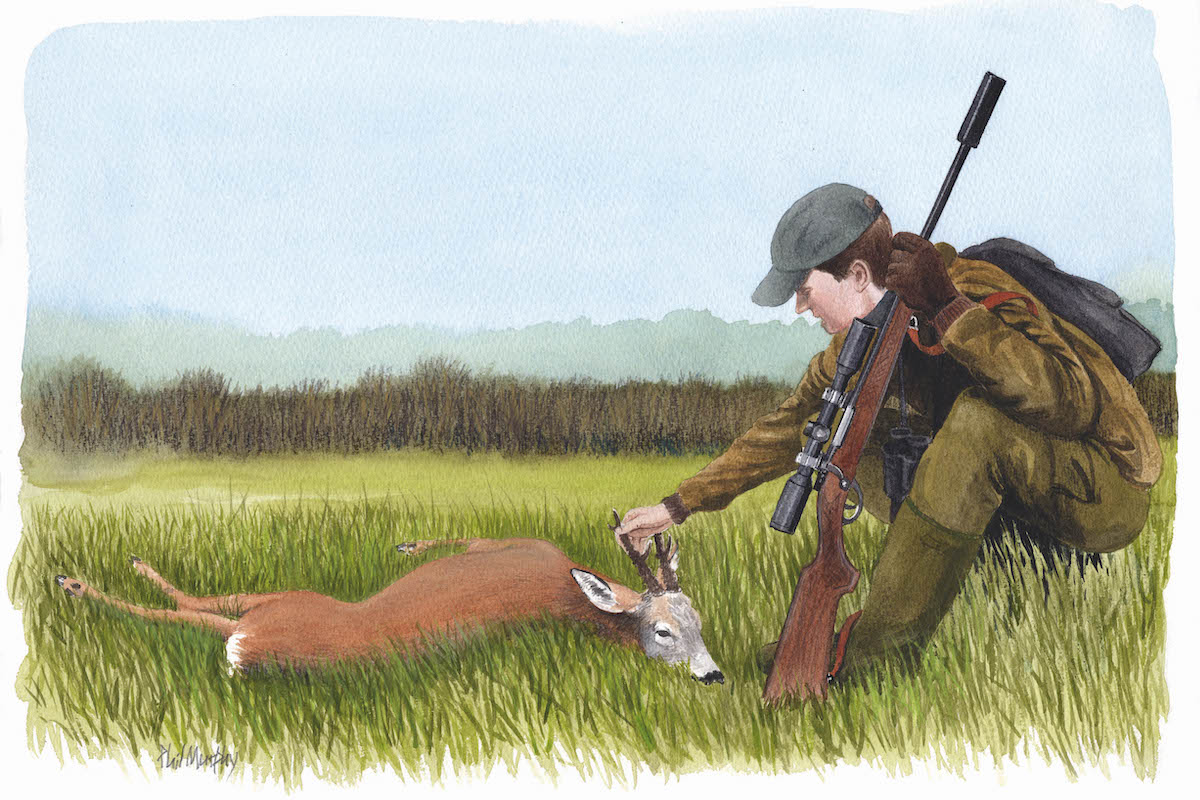Is the stalking community unprofessional in its approach to culling?
Kate Gatacre talks to a forester and a deer stalker about the conflict of deer versus crops to discuss if the shooting community is unprofessional in it's approach to culling

Simon Freedman had warned me not to be too hopeful when we headed to one of his stalking patches in late July. “I’ve hit the deer hard in this wood,” he explained, “but you never know – we might see something.” We were meeting at Pamber Forest in Hampshire, where I had been invited by Englefield estate to see the deer management on the 200ha Site of Special Scientific Interest (SSSI) cited for its rich invertebrate populations. Also an ancient semi-natural woodland, much of the conservation work at Pamber, near Silchester, is undertaken by the Hampshire & Isle of Wight Wildlife Trust.
As we drew up to the woods, which are criss-crossed by gravel tracks, we could hear the croaky call of several nightjars. According to Simon, they particularly like sitting on the gravel. However, the easy access of the gravel paths is one of the things that makes controlling the deer here more complicated, too. “Pamber is managed primarily for the benefit of the wildlife and the SSSI, but public access is allowed, and timber production is important, too. Culling has been trickier here than on a patch that has no public access. You’ll see as we leave — walkers and cyclists will start arriving,” whispered Simon as we left his vehicle. “The other issue is that there is a huge amount of undergrowth, so apart from on the clear-fell sites, it’s very difficult to see the deer at all.”
It was just about light by then, so we made our way to one of his high seats. Part of Simon’s business is making high seats (Reeves Ltd) — which is why readers might recognise his name — as well as running the gunroom at the nearby Royal Berkshire Shooting School. Once at the high seat, we clambered up, and were in a spot overlooking a large area of clear-fell that had been replanted during the winter. “Some stalkers might say this is already too late to arrive,” Simon said, “but I think that you’re better off not crashing through the undergrowth while it’s still dark.”
His prediction was spot on —we heard a muntjac or roe bash about a bit to our left, and later to our right, but saw nothing. After a couple of hours, we headed off to meet Greg Vickers, the Englefield estate head forester, who manages Pamber for the estate.
A call to cull
“The deer hadn’t been managed for at least eight or nine years here,” Greg told me, “and as it is a SSSI, and needing regeneration and replanting, it made sense to bring in deer control.” The Wildlife Trust coppice small areas and traditionally used fences; however, as the management was extended to other parts of the woodland, it became impractical to fence everything.
Since last Christmas, Simon has culled hard, taking mostly does. It was necessary, according to Greg. “Without the culling we’ve done, the woods wouldn’t be able to regenerate properly. For me, deer control in woodlands is about protecting crops and ground flora, just as a farmer needs to limit damage to his crops. The deer control must move with the forestry.”

For the most efficient deer control, it is the does that need to be culled the hardest
Simon agreed: “A lot of the older stalkers will just head to the same spots year after year. I try to be more flexible than that. Fallow are particularly sharp and will learn to avoid certain areas.”
According to Greg, many of the larger conifer plantations can survive without the protection of fencing. “But of course at Pamber it is mostly broadleaf, and deer will decimate these pretty quickly. I rely on Simon to control the deer numbers and prevent damage. On a new plantation, it is essential that the deer are culled hard for a couple of seasons. After that, the trees have toughened up enough to survive. We’re taking the less-fencing-and-more-deer-control approach here. Fallow can be like locusts, in my experience, moving around in larger herds and causing a huge amount of damage to woodland as they go.”
The deer control has been supported by the Wildlife Trust, which, Greg informed me, “is very positive about the reintroduction of deer control. The trust did all the PR for the project, made signs, wrote a rationale and talked to the parish council.” The project involves clear-felling large blocks of woodland — about 3ha last year— and replanting each section. “We are aiming for a long-lived area of woodland here, so we are planting oaks and other broadleaf species. it should make for high-quality timber for the next generation. We’ve been working in these woods for around five years now. initially, there were deer, but it wasn’t too bad because most trees were mature. With the regeneration, we started seeing an increase in browsing and damage to young trees. as dense areas with little ground flora were opened up, the undergrowth came back very quickly. We have seen a number of new bird species move in.”
Damage control
The costs of planting trees on such a large estate can be high, and even more so if the trees are damaged before they can get going. Moreover, without efficient deer control, there needs to be more protection — better tree guards, more fences and so on. There is much at stake, in terms of effort, conservation and money, Greg explained: “We planted around 60,000 trees in the area last year, which amounts to more than £100,000 in costs — which is why it is so vital to control deer here.” He continued: “If you can save on the guard, or better still use natural regeneration and avoid planting, it makes a huge difference. If there were low numbers of deer and we didn’t have to protect anything, then planting costs across the estate would be halved. There would also be less need for these large-scale projects. the natural regeneration has been fantastic since we started culling.”
Management or control?
It was at that moment of the conversation that Greg expressed his view on wider deer management issues: “The problem for many of us who rely on crops, both farmers and foresters, is that stalkers do not appreciate the need to bring deer numbers down to a level where they aren’t doing significant damage. Many view stalking as a hobby, whereas what is often required is someone with a professional approach who is there to meet the needs of the forester. I’m not sure most landowners really appreciate the problem or understand the damage deer cause either.”
Simon considered this for a moment, and responded: “Well, that’s not entirely untrue. However, I’d say it is because stalkers are treated unprofessionally. Professionals get paid. there aren’t many stalkers who are paid purely for the protection of crops or trees, barring those in the Forestry Commission. In fact, it is usually the other way round. Often stalkers aren’t told which areas need controlling for crop protection, and many stalkers pay for the right to stalk on an area. “Those taking clients out will be primarily managing deer to improve them in terms of trophies and health, so their objectives are completely different. They certainly won’t shoot on sight, they’ll be preserving the stronger animals and taking the weaker ones. And many of the ‘hobby’ stalkers who pay for a bit of ground won’t want to hit the females too hard, as they’ll want something to stalk next year. And of course winter culling is harder work, and more tricky to fit in around a job. Plus there’s all the expenses involved in stalking. The price of venison doesn’t begin to cover that.”
Simon is right — most of us, barring the small proportion of professionals, stalk for pleasure, and are happy to pay a bit for the privilege. The gamedealer’s price per kilo only goes a small way to covering the costs of rifle, scope, binoculars, ammunition, fuel and, most of all, time that go into what we do. And, as he succinctly put it: “Deer managers or stalkers and foresters or farmers have a completely different notion of what is okay in terms of deer numbers. The days of deer being treated as a problem or vermin are long gone.” However, in the case of Pamber, Simon says that in the short term, a harsh programme of culling was needed. “What I’m doing is deer control, as opposed to deer management.”

After large-scale clearance projects, replanted forestry should be seen as a crop, needing protection
Costs of regeneration
Englefield estate Forestry Department manages 3,500 acres of its own woodland and also provides a consultancy and contracting service for other landowners. This side of the business has grown rapidly as the forest industry has boomed due to the demand for timber. Greg reckons that proper deer control can save him around £20,000 to £30,000 a year if he can use natural regeneration. “It’s not only about the prevention of damage and loss of trees. It also means we can cut down on the amount of fencing needed, which is not only ugly but also extremely expensive to put into place. Besides which, in an area such as Pamber, it isn’t always practical.
- Cost of each tree: 30p
- Cost of planting: £1.00
- Cost of guard and stake: £1.20
- Total cost of planting each tree: £2.50








